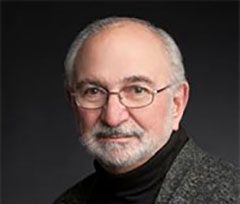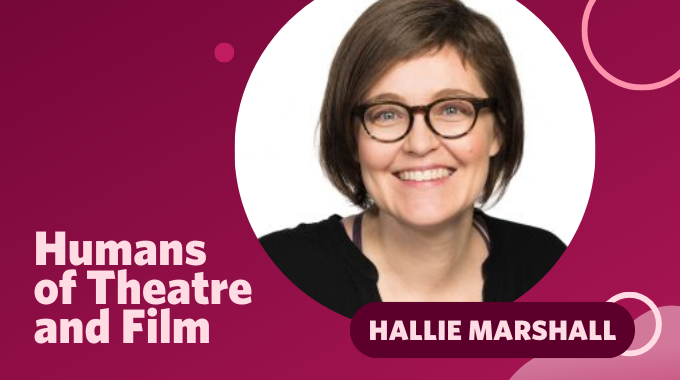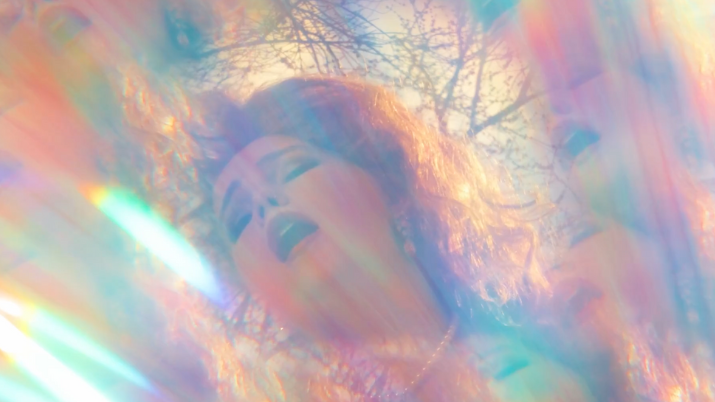

Adrianne & The Castle by Shannon Walsh
Associate Professor (Film Production) and award-winning documentary filmmaker Shannon Walsh’s latest documentary Adrianne & The Castle delves into the captivating lives of Alan and Adrianne St. George, who built an extraordinary medieval-style castle in rural Illinois dedicated to their love. Following Adrianne’s passing, the film documents Alan’s journey as he puts the finishing touches on the castle and grapples with his grief through musical re-enactments of their story. Adrianne & The Castle premiered at the South by Southwest Film & TV Festival in Austin last week, where it received rave reviews (here and here).
Shannon has had a fruitful year, as her book, The Documentary Filmmaker’s Intuition: Creating Ethical and Impactful Non-fiction Films, was also recently published. A guide to ethical documentary filmmaking, the book provides an overview of the entire process, from conception to distribution. It focuses on ethics, impact, and character-driven storytelling, with Shannon sharing her personal insights and experiences.
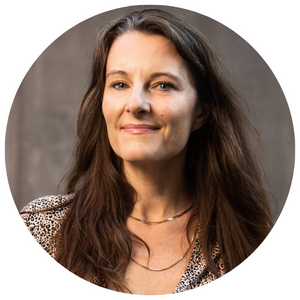

Tell us about Adrianne & The Castle
Inventive and whimsical, Adrianne & The Castle is a true story of great love and loss. Following the story of the St. Georges who built a castle dedicated to their love, built on imagination, fantasy, and big dreams, in rural Illinois. The documentary explores the fantastic world built by Alan and Adrianne, and his attempts to live on in the wake of her passing.
How did you hear about the St. Georges and their home and what drew you to their story?
I first heard about Havencrest Castle through my best friend and project co-creator, Laurel Sprengelmeyer. She grew up in a neighbouring town and her sister had visited the castle, as it’s open to the public a couple of weekends a year. Laurel told me about their story and the magical world that they’d created, and we started exploring what it would mean to make a documentary about it.
What were some of the challenges of documenting such a unique and personal narrative of grief and love?
It was challenging because most of the elements of the story had occurred in the past, so it took a lot of thinking and writing to decide how to conceptualize it. How would we build a story that was happening in the present and follow a journey for Alan St. George? I think there’s also a lot of responsibility in telling such a personal story that is so meaningful for Alan, making sure you get it right and that you guard their love story, while at the same time building a unique narrative.
Obviously, grief runs through everything. It was a challenge to hold Alan and his grief with respect and care while also bringing him into emotional places that were difficult. That was a consideration that always had to be front of minds as we worked.
The St. Georges lived by the motto, “reality is for those who lack imagination.” How did this philosophy influence your approach and style in capturing their lives on film?
Their motto completely guided the approach I took in making the film. It was very interesting as a documentary filmmaker to meet a couple who lived so deeply in fantasy that the line between the real and unreal was constantly amorphous in their lives. Everything from the way Alan would turn a piece of wood into a slab of marble through painterly techniques, to pouring concrete and then scoring it to make it look like brick, the castle is a world of illusion. Alan is a magician and both he and Adrianne constantly explored the limits of reality and the permeability between fact and fantasy in the way that they lived their lives.
That was something I really wanted to get across in the film and part of why we chose to film it with musical and other fantastical elements building on illusions, and magic permeating throughout the film. They embody the idea that the world is what we make of it and were active in choosing the world they wanted to inhabit.
“It was very much about creating the kind of relationship with Alan that would allow us to represent the St. Georges in a way that would feel truly accurate to him. That didn't mean being perfectly aligned to the facts of their story, but to the ethos and to the magic that permeated their lives.”
Shannon Walsh
Associate Professor, Film Production
“It was very much about creating the kind of relationship with Alan that would allow us to represent the St. Georges in a way that would feel truly accurate to him. That didn't mean being perfectly aligned to the facts of their story, but to the ethos and to the magic that permeated their lives.”
In your book, The Documentary Filmmakers Intuition, you emphasize ethics in documentary filmmaking. How did these principles guide your decisions while making Adrianne & The Castle?
Ethics constantly guide the approach that I take in making nonfiction films. In this case, the ethical elements were about establishing a trusting rapport with Alan, and deeply involving him as a co-creator in the production process. It was also important to establish trust around the boundaries we would navigate in telling their story. Ideas for how we would depict their lives were always brought to Alan and we explored and brainstormed creatively with him in thinking about how to represent both his love, and his grief. Every project has its own ethical contours. In this film, it was very much about creating the kind of relationship with Alan that would allow us to represent the St. Georges in a way that would feel truly accurate to him. That didn’t mean being perfectly aligned to the facts of their story, but to the ethos and to the magic that permeated their lives.
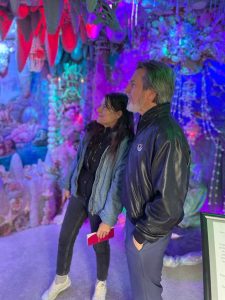

Shannon Walsh and Alan St. George on set
How did relationship-building interview techniques and emphatic listening skills, as outlined in your book, inform your approach during the creation of the film?
All the techniques I described in the book around relationship building, empathetic listening, and interviewing were at play in how I approached the interviews for this film. In Adrianne & The Castle, I also started to explore a new way of interviewing, through the re-creation of memory, using what I called memory prompts. I have a background in participatory video and research processes in which participants become part of a creative process to get to deeper intuitive levels that other interview techniques often can’t elicit. In this film, the re-creations are not done as a way of describing something to the audience, rather they are done as part of a journey of healing that we created for Alan. They were a way for him to inhabit his own memory in new ways. In that sense, the creative techniques we used in the film are really interview prompts, and we talked a lot about that with my Director of Photography Pablo Alvarez Mesa and co-writer Laurel Sprengelmeyer. The technique of memory prompts through creative re-enactment was able to reach different parts of the story that I don’t think we would have found through traditional interviewing.
At the same time, there were moments where disclosure and having those personal one-on-one moments between him and I were important, both for establishing our rapport and for building the story of the film. I lost my father to COVID 19 In the midst of working on this film, and certainly part of the dynamic between Alan and I was deeply informed by our shared experience of grief in that moment. There’s nothing that can completely replace sharing a space of mutual empathy and understanding. I was able to learn so much about surviving grief through the time I spent with Alan. His incredibly strong love for Adrianne also renewed my sense that both art and love are the most valuable of human endeavors. Our sense of shared loss and the feelings of deep love are woven through the fabric of this film.
“It's astounding to see how art and creativity can transport us, bring us closer to ourselves and heal us. I hope that people will find a space to feel seen in all their weirdness, authenticity and beauty—that whoever they are, and whatever they are, they are lovable.”
Shannon Walsh
Associate Professor, Film Production
“It's astounding to see how art and creativity can transport us, bring us closer to ourselves and heal us. I hope that people will find a space to feel seen in all their weirdness, authenticity and beauty—that whoever they are, and whatever they are, they are lovable.”
What do you hope audiences take away from Adrianne & The Castle and how do you envision the film contributing to conversations about grief, love, the creative process, and collective personal healing?
Adrianne & The Castle is really a story of love and resilience and reminds us that we can all inhabit our authentic selves fearlessly. This is the greatest love story that you’ve never heard of. What Alan and Adrianne shared is so incredibly special, it even made a believer of me in the power and possibility of true love. There’s something very beautiful to see the almost childlike wonder that these two took in each other.
Beyond that though, I was really drawn to their deep conviction to live a totally authentic life. For them that meant having to step aside from the culture around them, especially in the 1970s and ‘80s. The way that they wanted to live was very different from what was happening around them and, in some ways, they closed themselves off to build the fantasy world that they wanted to live within.
I think there’s a real resonance with that today, as more and more people seek to embrace their authentic selves and try to live in alignment with that. Adrianne was completely herself, even making her own clothes and celebrating her plus-size figure in all its beauty. She celebrated her uniqueness in a special way, and Alan loved her more. There’s something about that that is really touching and encouraging.
I also think seeing someone battle through grief and find ways to get to the other side of it is something we can all relate to; whether that is the grief of losing someone close to you like it was for Alan, or even the grief of a broken heart that all of us live through to various degrees at some point in our lives. It’s very healing to witness someone else go through it, and to find our common heartbreak and healing.
In the end, it’s the creative process that Alan has used throughout his journey that brings forth that emotional authenticity. It’s astounding to see how art and creativity can transport us, bring us closer to ourselves and heal us. I hope that people will find a space to feel seen in all their weirdness, authenticity and beauty—that whoever they are, and whatever they are, they are lovable. That we’re all lovable and worthy of love, even if love at times can come with great pain. And wherever we can, we just need to be our true selves.
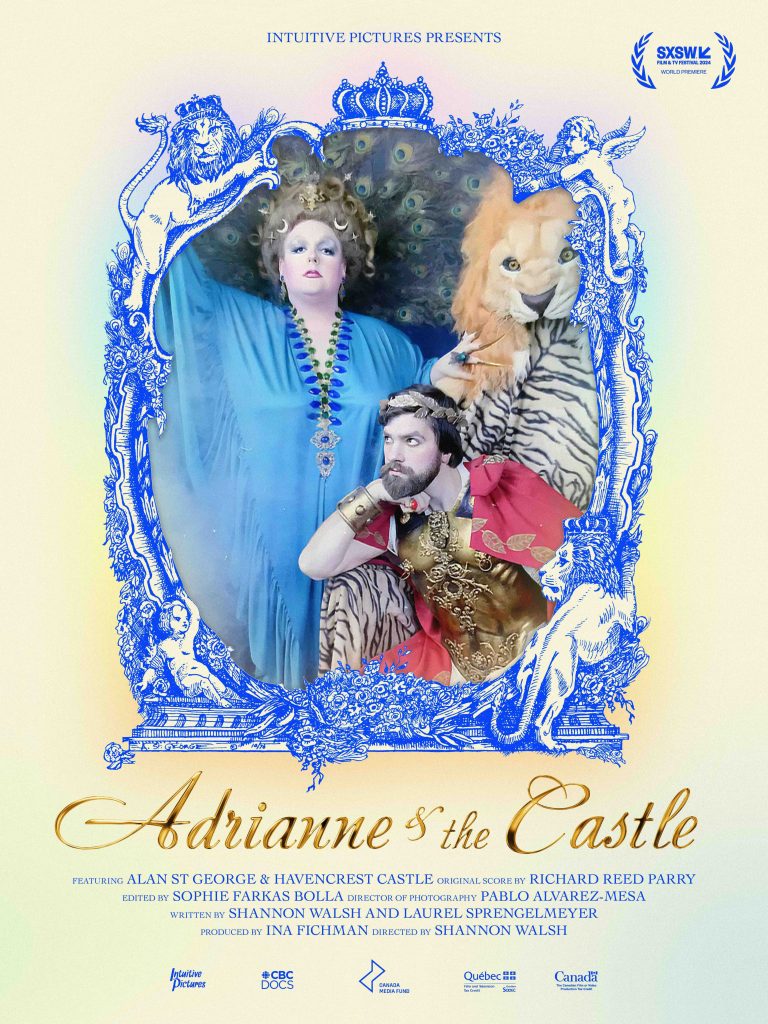

Adrianne & the Castle in Toronto at Hot Docs
Friday, April 26 at 4:45 pm, Scotiabank Theatre 5
Saturday, April 27 at 2 pm, Scotiabank Theatre 5
Adrianne & the Castle in Vancouver at DOXA (Opening Film)
Saturday, May 4 at 7 pm, Playhouse
